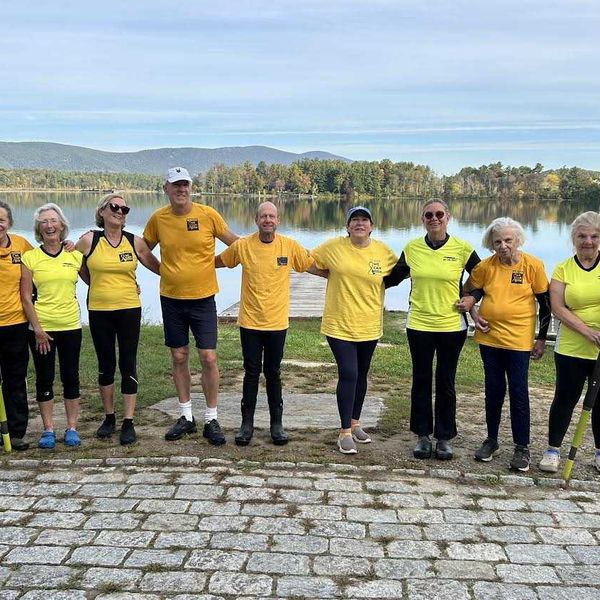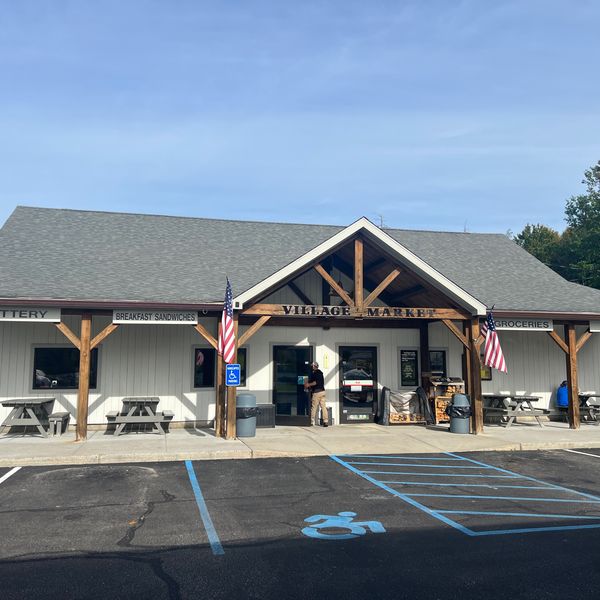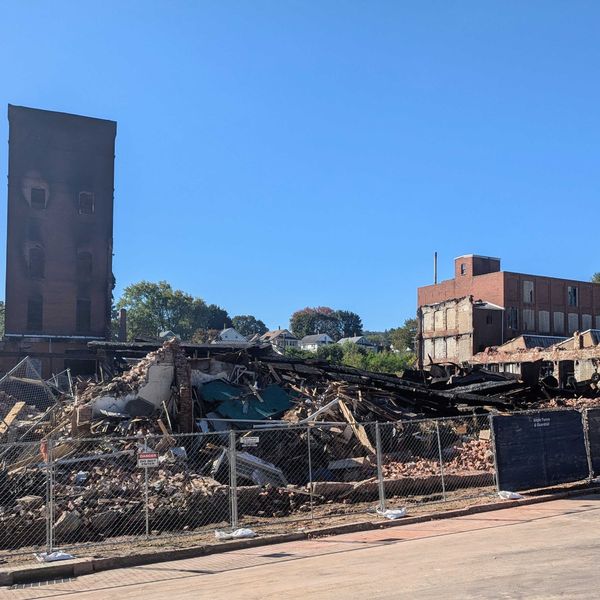Latest News
Will a Republican please stand up?
Oct 15, 2025
In comparing Republicans and Democrats, one is reminded of the remark by the American humorist, Will Rogers who said in 1928,“I’m not a member of any organized political party — I’m a Democrat”. Even now, while a joke, this observation makes sense whereas it would seem ridiculous applied to the Republicans. And what was true back a hundred years ago has become many times more so under the leadership of President Donald J. Trump. Today the Republican party speaks with near unanimity.
During the 1950s, Senator Joseph McCarthy (R., Wis.) made a name for himself stirring up and exploiting the fear and hatred of communism. The demise of McCarthy began in 1950 when Maine’s Republican Senator, Margaret Chase Smith made a memorable speech on the Senate floor denouncing her colleague:
“It is high time that we stopped thinking politically as Republicans and Democrats about elections and started thinking patriotically as Americans about national security based on individual freedom. It is high time that we all stopped being tools and victims of totalitarian techniques — techniques that, if continued here unchecked, will surely end what we have come to cherish as the American way of life”.
In 1973, President Richard Nixon was being investigated by special prosecutor Archibald Cox who had been hired by Attorney General Eliot Richardson. On a Saturday night, Richardson received a call from Nixon demanding that Cox be fired forthwith. Richardson refused the President’s direct order and resigned as did his second in command at the Justice Department, William Ruckelshaus (the next in line, Robert Bork complied).Both men were, and still are, considered patriots for refusing to implement Nixon’s order.
One member of Congress who did stand up to Donald Trump was Liz Cheney, the former Republican Congresswoman from Wyoming and daughter of former Vice President Dick Cheney.An orthodox, conservative Republican congresswoman, she attacked President Trump during and after the 2020 election for trying to overthrow the election, thus triggering the enmity of a large portion of her House colleagues and Wyoming Republicans . She became vice chairman of The U.S. House Select Committee on the January 6th attack. Her performance on the Committee won her national acclaim but she was defeated in her re-election primary receiving only 29% of the Republican vote.
The tripartite division of power in our federal government was designed to provide stability by limiting the power of the executive, to prevent a future president from assuming unintended powers. However, over time authority seems to have shifted to the executive branch.
More and more, members of Congress are unwilling to take positions that do not closely conform to those of their party’s leadership. This is less true of Democrats who have a long tradition or independence. Republicans, on the other hand, have become ever more controlled by their authoritarian President.
Republican members of Congress havebeen totally silent about Trump andhis administration’s contempt for the law. A few notable examples include usurpation of the Congressional prerogative to levy tariffs, the sending of the military into American cities, the destruction of a boat full of Venezuelans in international waters, and the reckless misbehavior of ICE officers, one of which involved arresting and illegally deportingindividuals to an El Salvador prison and refusing to correct this error. Such illegal acts are happening regularly. But not a single Republican official has stood up to denounce or even question these events. Do they really think such moves are OK?
On September 30, President Trump brought back from all over the world some 800 of the nation’s highest ranking military leaders to a military base in Virginia to hear him give an extremely partisan political speech attacking ”radical leftists” and describing major American cities as “war zones” and telling the military leaders to “use US cities as training grounds”. Despite the illegality of the president’s sending troops into US cities and the total opposition of the various state and local leaders involved, the only member of congress to speak out against the sending of the military to our cities has been Sen. Jack Reed, a Democrat from Rhode Island; no Republican has spoken up; are they all cyphers?
During Trump’s “Big, Beautiful Tax bill” formulation in Congress, Republican legislators hardly ever spoke of it lest ordinary citizens realize how favorable it was to the wealthy and how health and other programs were being cut to pay for it. The same with many business deductions and other favors. The vote in the Senate on Trump’s “Big, Beautiful Bill was 51-50 with the Vice-president’s vote breaking the tie.
Despite her fervent opposition, Sen. Lisa Murkowski (R, Alaska) cast the deciding vote after pressure from her colleagues and the White House. In the House, only 2 very conservative republicans voted against it, both because theywere against increasing the national debt. But had Senator Murkowski voted against the Bill, it might have been revised in a more bi-partisan way, likely avoiding the current shutdown of the federal government.
Architect and landscape designer Mac Gordon lives in Lakeville.
Keep ReadingShow less
125 years ago — October 1900
A force of about 15 men are engaged in the work of improving the reservoir.
Last Saturday night Carl Stemm of Sharon Valley and James Clark of Sharon Station had a head and head bicycle collision near the old Reinhart blacksmith shop between here and the Valley, which resulted in the death of Mr. Stemm.
The Pawling Chronicle has bought out the Recorder of that place, the field not being large enough to support two local papers.
A.B. Landon started for Vermont Tuesday morning after another carload of cows. This makes the fourth carload he has had this Fall. Mr. Landon says the cows from that section give good satisfaction and sell like hot cakes.
100 years ago — October 1925
Married, October 8, 1925, Mr. Robert John Graham and Miss Mabel Russell, both of Falls Village. The ceremony was performed by Dr. Goddard at his home, By the Way, in Salisbury. The young couple left in their automobile, accompanied by the good wishes of all concerned.
They are still eating sweet corn at Hamlet Hill Farm and they say it is the best they have had yet.
One of the most interested fans in the World series this week has been Mr. William Conklin. Mr. Conklin is nearly 91 years of age, but he has been a keen listener in on W.P. Bishop's radio every afternoon. Nothing got by him, as he followed every play as it was made, and greatly enjoyed it.
The Scoville family expect soon to close Southaway cottage at Barack Matiff and return to New York for the winter.
Gov. Trumbull has selected Mrs. W.B. Rand to paint his portrait for the State Library. Mrs. Rand will begin the portrait in Hartford this month.
The hunting season opened last Thursday. They say the hunting is fine, but finding not so good.
50 years ago — October 1975
Cable television is still planned for Northwest Connecticut but will not become a reality until late in the summer of 1976, according to Nicholas Eddy, a principal of Haystack Cable television. Mr. Eddy said this week that Haystack has received both state and federal approval for cable television in the villages of Canaan, Lakeville and Salisbury. Additional approval for Norfolk and Sharon will be sought.
Gov. Ella T. Grasso visited Lakeville Sunday afternoon to pay her respects to John D. Briscoe, former chairman of the State Board of Agriculture and longtime owner of Silent Meadow Farm, who died Friday of cancer.
The Connecticut Bicentennial wagon will make a special appearance at Sunday's Blackberry River Riders 4-H show in East Canaan. The wagon, owned by Elmer Gladding of Southbury, will be one of several making a trek next year to Valley Forge.
25 years ago — October 2000
SALISBURY — The old perpendicular parking spots in front of the Village Store, the Salisbury Package Store, Salisbury Kitchens and OSCAR's are being removed this week, courtesy of the state Department of Transportation. Verdant plantings and a curbed sidewalk will be added in their place. The change will create a visual cue for truckers and other motorists, indicating they have entered a town center and should slow down.
SHARON — The Board of Selectmen plans to look into an ordinance concerning digging and excavation on town property. The decision to consider putting into place such an ordinance comes after some unidentified New York state residents found some 18th and 19th- century coins and artifacts along Route 41 in Sharon.
These items were taken from The Lakeville Journal archives at Salisbury’s Scoville Memorial Library, keeping the original wording intact as possible.
Keep ReadingShow less
Families: Get a globe
Oct 15, 2025
Those of us old enough, we remember our parents and our siblings asking questions about the world we lived in. “Where is Anzio and Normandy?” “Where is Inchon?” “Where is Cambodia and what’s the Gulf of Tonkin?” And “Kuwait? What’s Kuwait?” “Kabul? Where is that?” Sadly, you will be asking these questions again all too soon.
American youth, woefully undereducated, were always being sent “over there” to fight battles vital for our national interests and security. Parents desperately try to find out how far away they were going to be, what were the strange lands, strange peoples, strange customs they were going to encounter. And if all this is about to happen again, US education is still lacking in every possible geographic way.
In 1890-1910 the disparity between the worker and the very rich in all industrial societies including America was desperately evident. Natural resources (metals, oil, power, engineering) outstripped social balancing, allowing a handful to become so wealthy they make today’s billionaires look like paupers. Meanwhile, new inventions across the world as a result of the industrial revolution made those very wealthy here and especially in Europe, to want to keep their power by expanding control and territory. Countries fought such unopposed expansion until, finally, they became embroiled in an all-out war — the first world war in 1914 (WWI) — to stop the expansion of these powers. American elites and the most wealthy, desperate not to chose sides and lose their own positions of power and wealth, kept us out of the conflict until 1917 when American interests across the globe were threatened and we joined in to stop the Kaiser and his allies. That war was fought in 17 countries in Europe (can you name any of them?), 12 countries in Asia, 26 in Africa, and 12 in the Pacific basin. WWI killed about 40,000,000 people — about half of all the people in the USA at the time.
Just 20 years later, after the Great Depression, new inventions and manufacturing capabilities allowed nations to seek to return to strength through dominance — especially seeking to control oil, resources, and labor. The 3rd Reich started by building the industrial base, annexing neighbors, changing the social norms and birthright of its citizens to favor those in support of its moral codes. Japan invaded Korea and China. Soon, joined by other nations also wanting dominance over their neighbors, they were joined by Italy, and Russia and kicked off WWII. America, once again to protect the financial elite, stayed out of WWII for two years until Japan’s direct attack on our protectorate of Hawaii (not yet a state). In the end, across the globe, on every continent, in almost every country, millions perished, were tortured, executed, and died in battle. 70,000,000 to 85,000,000 people were killed — more than half of all the people in the USA at the time.
Korea, Vietnam, Kuwait, Afghanistan, Iraq — all followed since 1945. Why? Study history, but it usually boils down to powerful cabals wanting more.
Now, once again, there are potentates (domestic and faoreign) and several governments that seek superiority over their fellow citizens, are re-writing the moral codes of civilization, and are seeking to protect the wealth and prestige of the most wealthy. This time around it may be the rest of the world against a new cabal of financially elite rulers, desperate for power, desperate to secure dominance over people across the globe. And that battle, which will come – history always repeats – will take place in locations across the globe your children may never have been aware of, and you may find yourself asking, “Where is Panama? Where is Sandy Cay? Where is Bahrain? Where is Suriname and Paraguay? Where is Heimaey? What is Gaza? Why are our kids fighting there?”
Go get a globe and teach yourself and your kids before it is too late, to really know what is going on and where. Their lives are at stake.
Peter Riva, a former resident of Amenia Union, New York, now lives in Gila, New Mexico.
Keep ReadingShow less
loading










